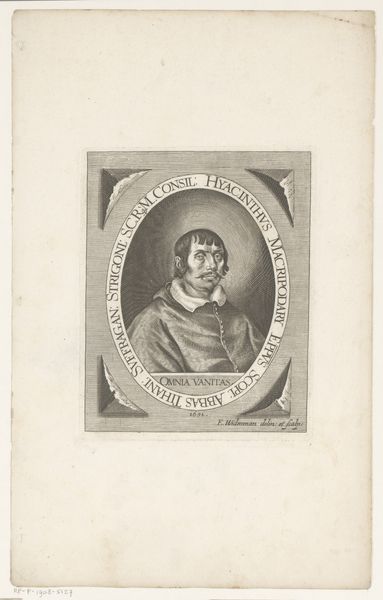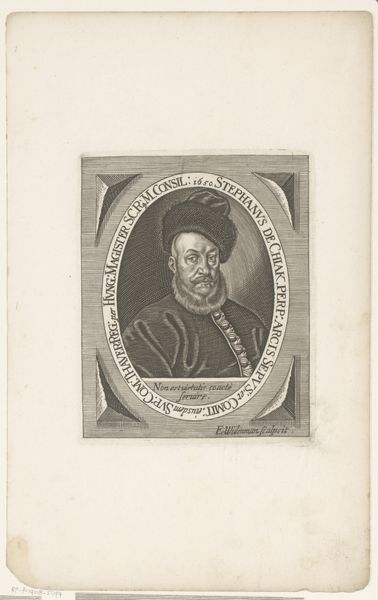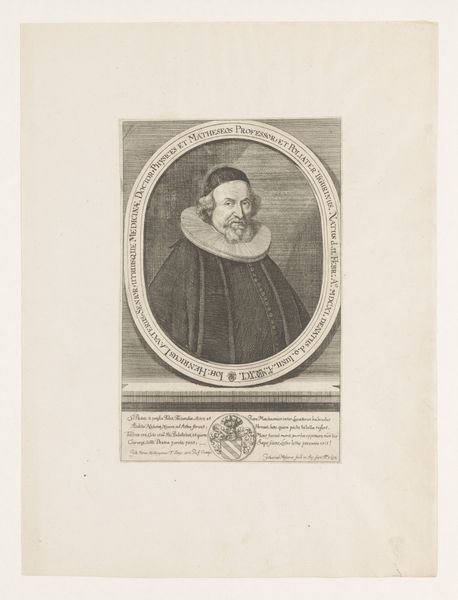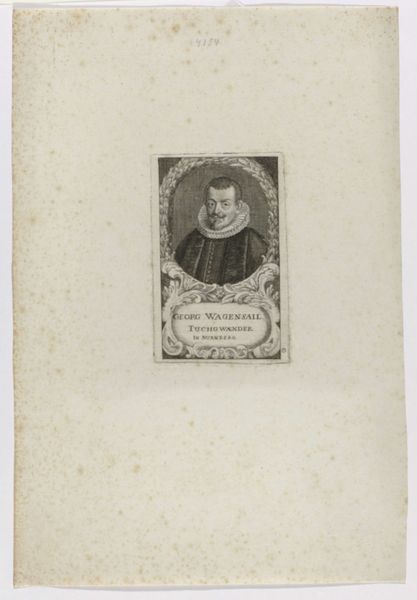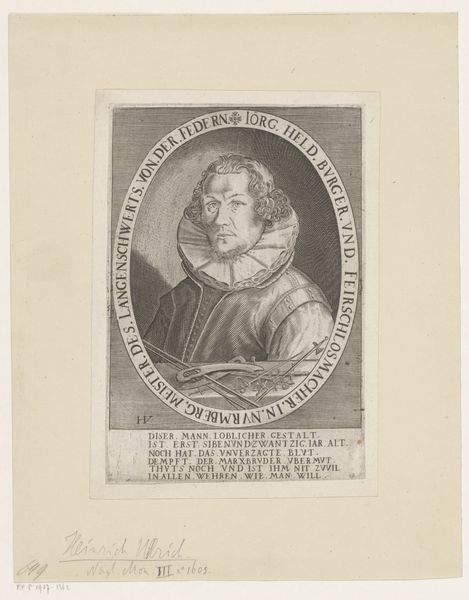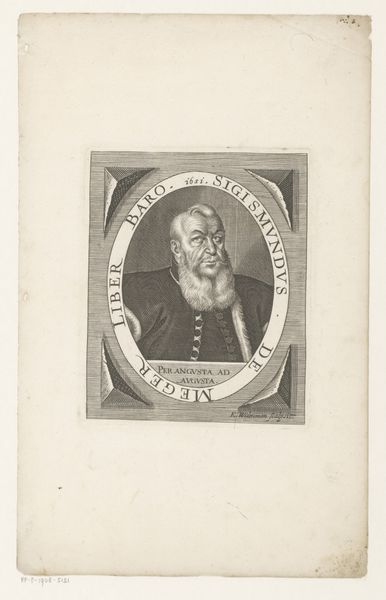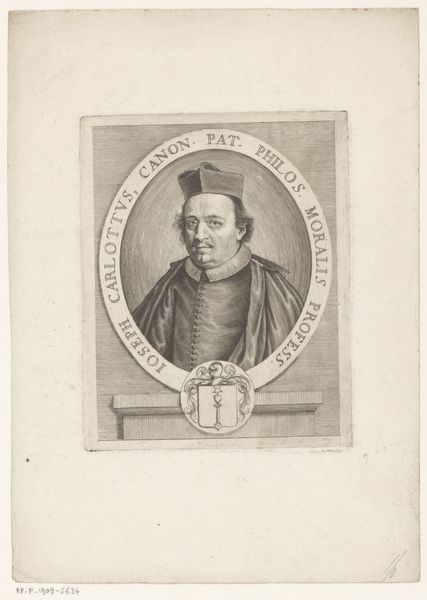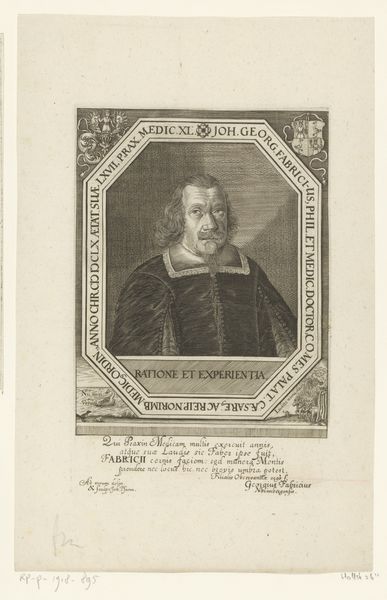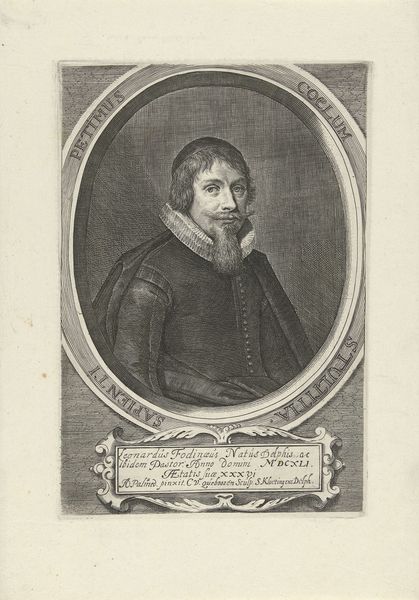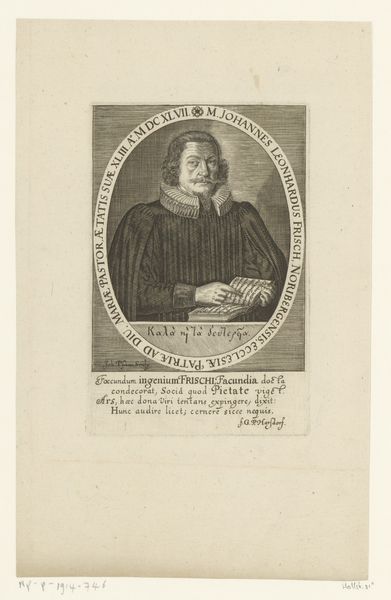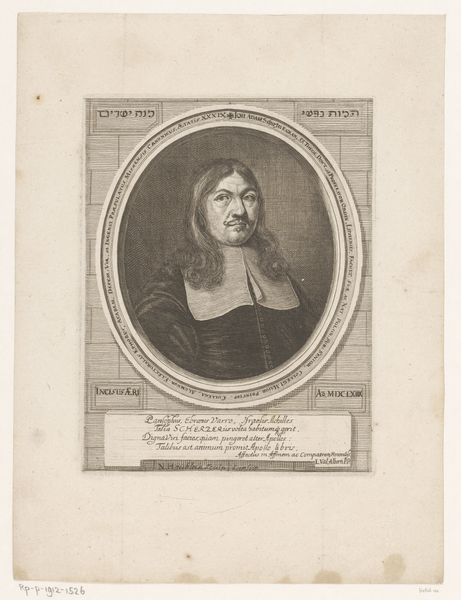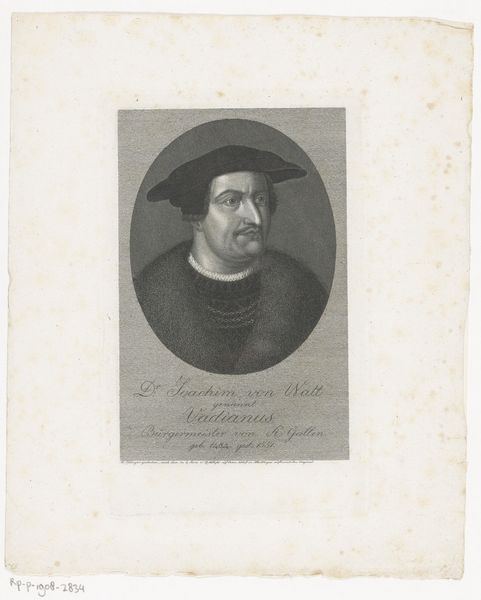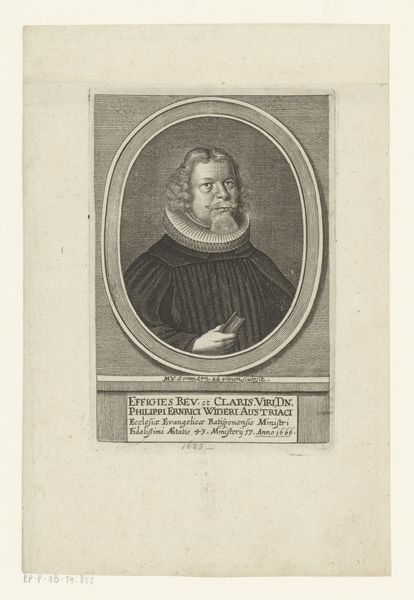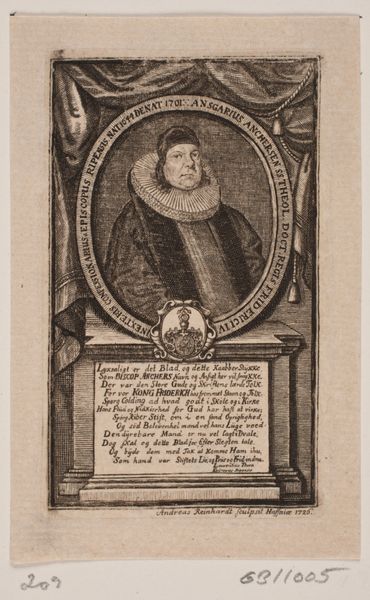
print, paper, engraving
#
portrait
#
baroque
# print
#
old engraving style
#
paper
#
engraving
Dimensions: height 147 mm, width 118 mm
Copyright: Rijks Museum: Open Domain
Editor: Here we have Elias Widemann’s 1649 engraving on paper, a portrait of János Hederváry, currently at the Rijksmuseum. The man's serious gaze definitely gives off an aura of authority, amplified by the oval frame. How would you interpret this work considering its historical setting? Curator: Well, let’s think about the role of portraiture in the 17th century, shall we? This engraving served a very specific social function. Its purpose wasn't necessarily to capture the inner spirit of János, but to project and perpetuate his status and affiliations. Notice the inscription surrounding the portrait? Editor: Yes, it mentions he’s a canon of the church and abbot. So the portrait publicizes those positions. Curator: Precisely. It's about consolidating and disseminating power. Printmaking made images like this relatively accessible. Consider, who was the intended audience? Was it simply for personal admiration, or something more communal, reinforcing established social hierarchies? And what about the choice of rendering his image through a print? Editor: I guess it allowed for wider circulation, spreading his image and authority further than a unique painted portrait could. Almost like a seventeenth-century publicity campaign! Curator: An interesting point. It raises questions about the political power of images, particularly within religious institutions. These images served a socio-political role within communities, reminding us that art exists not in isolation, but as an active player in historical events and power structures. Editor: I hadn't really considered how much social messaging could be packed into something that looks simply like someone’s portrait. It provides new insights into understanding the historical public function of imagery. Curator: Indeed. Looking beyond mere representation allows us to understand how images operated in and influenced social contexts, helping us to analyze this historical visual culture in deeper terms.
Comments
No comments
Be the first to comment and join the conversation on the ultimate creative platform.
